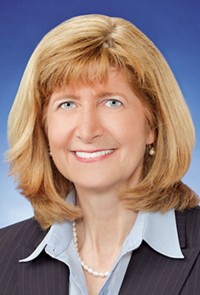Advertisement
Grab your lab coat. Let's get started
Welcome!
Welcome!
Create an account below to get 6 C&EN articles per month, receive newsletters and more - all free.
It seems this is your first time logging in online. Please enter the following information to continue.
As an ACS member you automatically get access to this site. All we need is few more details to create your reading experience.
Not you? Sign in with a different account.
Not you? Sign in with a different account.
ERROR 1
ERROR 1
ERROR 2
ERROR 2
ERROR 2
ERROR 2
ERROR 2
Password and Confirm password must match.
If you have an ACS member number, please enter it here so we can link this account to your membership. (optional)
ERROR 2
ACS values your privacy. By submitting your information, you are gaining access to C&EN and subscribing to our weekly newsletter. We use the information you provide to make your reading experience better, and we will never sell your data to third party members.
Comment
Practical applications of chemical nomenclature: Learning it and using it
by Michelle Monnens Rogers, Chair, ACS Committee on Nomenclature, Terminology, and Symbols
October 6, 2019
| A version of this story appeared in
Volume 97, Issue 39

Like many chemists finishing their chemistry degrees or PhD theses, I thought that my nomenclature days were over the second I left academia for a position in industry. Nomenclature was not what drew me to pursuing a career as a chemist. In fact, it was the part of my education that I enjoyed the least. When I became a research chemist in industry, I never suspected that my career would take me to a place where chemical nomenclature would be critical in my day-to-day work.
Fluency in nomenclature is an essential skill for me as a regulatory leader for a specialty chemical company. Determining the markets in which my company can sell specific products and figuring out how to best protect my company’s intellectual property comes down to understanding nomenclature. These critical business requirements gave me a new perspective on the value of nomenclature that I did not have during my education. I wanted to help other young chemists gain exposure to the practical uses of nomenclature during their educational experience. This desire led to my involvement with the American Chemical Society Committee on Nomenclature, Terminology, and Symbols (NTS).
The committee works to enable the use of a common language for chemistry by educating chemists on nomenclature, facilitating discussions on terminology, and advocating for the use of chemical representations that support a universal understanding of chemistry. NTS believes a universal understanding of chemistry also needs to be inclusive and accessible. NTS has partnered with the Braille Authority of North America (BANA) to review and help standardize the chemistry braille code. Chemical representations and symbols in use by chemists with visual impairments are currently varied and outdated. This collaborative effort to modernize the chemistry braille code is a multiyear effort and requires a historical perspective of nomenclature, symbols, and structure representation to understand what is being updated. Beyond the technical nomenclature piece, the BANA team is ensuring that any updates comply with braille notation requirements. As this project continues to advance, BANA and NTS are considering ways to engage chemists internationally to support the global standardization of the braille chemistry code.
William F. Carroll Jr.’s Aug. 5 Comment in C&EN included a question: “How can we provide aspiring chemists with the knowledge and skills they need to flourish in the global economy?” NTS is contributing to the answer by partnering with the American Association of Chemistry Teachers (AACT) and the ACS Division of Chemical Education to equip K–16 educators with methods and materials to use in their classrooms. NTS has engaged speakers for AACT workshops to converse with educators at all levels about the importance of chemical nomenclature in science curricula and how to make it accessible to various grade levels. Richard Hartshorn, secretary general of the International Union of Pure and Applied Chemistry (IUPAC), in his talk at the spring workshop, shared his views regarding the importance of nomenclature and included stories about Benjamin Franklin and Antoine Lavoisier, historical scientific figures that are well known to US students. At the workshops, NTS members have fostered discussions and presentations focused on incorporating chemical nomenclature into the high school chemistry curriculum. Facilitating information exchange means identifying communication channels that are effective. To that end, NTS is looking to engage with podcasts whose target audiences include K–16 educators in chemistry and related sciences.
As chemistry evolves, so do the nomenclature, terminology, and symbols used to represent that chemistry. Facilitating interactions that bring practicing chemists together to converse about and engage on new and evolving nomenclature is important to ensuring adoption by the community. It is critical that these discussions are diverse in terms of not only chemistry discipline but also geography and professional sector—industry, government, and academia. NTS serves the ACS community by facilitating these types of interactions to support a common understanding of nomenclature, terminology, and structural representation.
NTS also serves the ACS community by advocating for the use of current and proper nomenclature. As advocates, NTS members help ensure dissemination of nomenclature information. NTS is not a nomenclature authority; however, we work to support chemists in their use of nomenclature. This has been a recognized international challenge since the 1860s, when international meetings about nomenclature were first held. ACS was itself founded in 1876.
This year is an important one in the history of chemical nomenclature. It marks the 100th anniversary of IUPAC, which was established in Paris in 1919. One of the goals of IUPAC at the founding was to standardize chemical nomenclature across the international scientific community. With chemistry’s advancements over the past century, including becoming truly global, the need for worldwide standards for nomenclature, terminology, symbols, and structure representation has become more important for the clear and accurate communication of scientific information.
For more on how NTS can help you in the classroom, laboratory, and workplace, please visit us online at www.acs.org/nomenclature
Views expressed are those of the author and not necessarily those of C&EN or ACS.




Join the conversation
Contact the reporter
Submit a Letter to the Editor for publication
Engage with us on Twitter